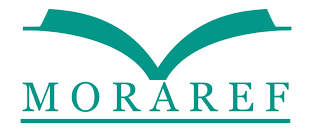TO THE MOON AND BACK: THE ADAPTATION OF MOON AS SYMBOL IN MOON KNIGHT'S COMIC TO TELEVISION SERIES ADAPTATION
DOI:
https://doi.org/10.22515/crossover.v3i2.7035Keywords:
adaptation, symbolism, moon knight, dissociative identity disorderAbstract
Moon Knight is one of the best-selling series in Marvel Studios, and no studies discussed the moon's symbolism in the comic Moon Knight and the TV series adaptations. This paper focuses on a shift in the meaning of the symbol from comics to TV series adaptations. In this research, the qualitative descriptive study is done to reveal whether the TV series adaptation of Moon Knight story faithfully reflects the moon symbolism in the comics. The research uses Hutcheon’s adaptation theory as background to analyze symbol adaptation, from the comic to TV series, and Eliade symbol theory to discuss the shift in the meaning of the symbols. The theory of Dissociative Identity Disorder from Kluft is used to analyze the three characters appear in the one body of the Moon Knight. Using Spradley's analysis method, we conclude that there are differences between the story from the Comic Moon Knight and its TV series adaptation. There were deficiencies that did not fully reflect the moon, and three symbols in the scene were unrelated to each other. The benefit of this research is to find out the significance of the differences in symbols in the adaptation of the Moon Knight series and to become reference material for future researchers who want to discuss the symbolization of the moon in the Moon Knight film.
Downloads
References
Camarillo, E. (2014). Analysis of Character Translations in Film Adaptations of Popular Literature. [Senior Theses, Clermont Colleges]. http://scholarship.claremont.edu/cmc_theses/872
Cantó, R. G. (2017). Visual semiotics applied to the evolution process of cross-media adaptations. Punctum International Journal of Semiotics, 3(2), https:// doi:10.18680/hss.2017.0016
Eliade, M. (1991). Images and symbols: Studies in religious symbolism (Vol. 538). Princeton University Press.
Ginting, J., Nasution, I., & Zein, T. (2022). Semiotics in Avengers’ Movie: Infinity War and End Game Trailer. Budapest International Research and Critics Institute-Journal (BIRCI-Journal), 5(1), 3518-3534.
Hutcheon, L. (2012). A theory of adaptation. Routledge.
Kluft, R. P. (1996). Dissociative identity disorder. In L. K. Michelson & W. J. Ray (Eds.), Handbook of dissociation: Theoretical, empirical, and clinical perspectives (pp. 337–366). Plenum Press. https://doi.org/10.1007/978-1-4899-0310-5_16
Lemire, J. (2016). Moon Knight Lunatic. Marvel Universe.
Lemire, J. (2017). Moon Knight: Birth and Death. Marvel Universe.
Lemire, J. (2017). Moon Knight: Reincarnation. Marvel Universe.
Mitchell, A. (2009). ImageTexT: Interdisciplinary Comics Studies. Praesentia, 4(3), https://scholar.google.com/citations?view_op=view_citation&hl=en&user=7-wlDUMAAAAJ&citation_for_view=7-wlDUMAAAAJ:zYLM7Y9cAGgC
Nurfitria, R. (2022). Gangguan dissociative identity disorder (DID) pada tokoh utama dalam film suiyoubi ga kieta karya kohei Yoshino. [Doctoral dissertation, Universitas Nasional].
Primorac, A. (2017). Victorian literature and film adaptation. Victorian Literature and Culture, 45(2), 451-459. doi:10.1017/S1060150316000711
Downloads
Published
How to Cite
Issue
Section
Citation Check
License
Copyright (c) 2023 Dimas Misbahul Munir, Dian Leoni Andri, Fadhilah Desy Handayani, Gusti Faradila Indrayani, Hadyan Rosyad, Mariam Kusniah, Tatik Apriliya, Yanti Indah Suryani

This work is licensed under a Creative Commons Attribution-ShareAlike 4.0 International License.
Authors retain copyright and grant the journal right of first publication with the work simultaneously licensed under a Creative Commons Attribution 4.0 International License that allows others to share the work with an acknowledgment of the work's authorship and initial publication in this journal.

















